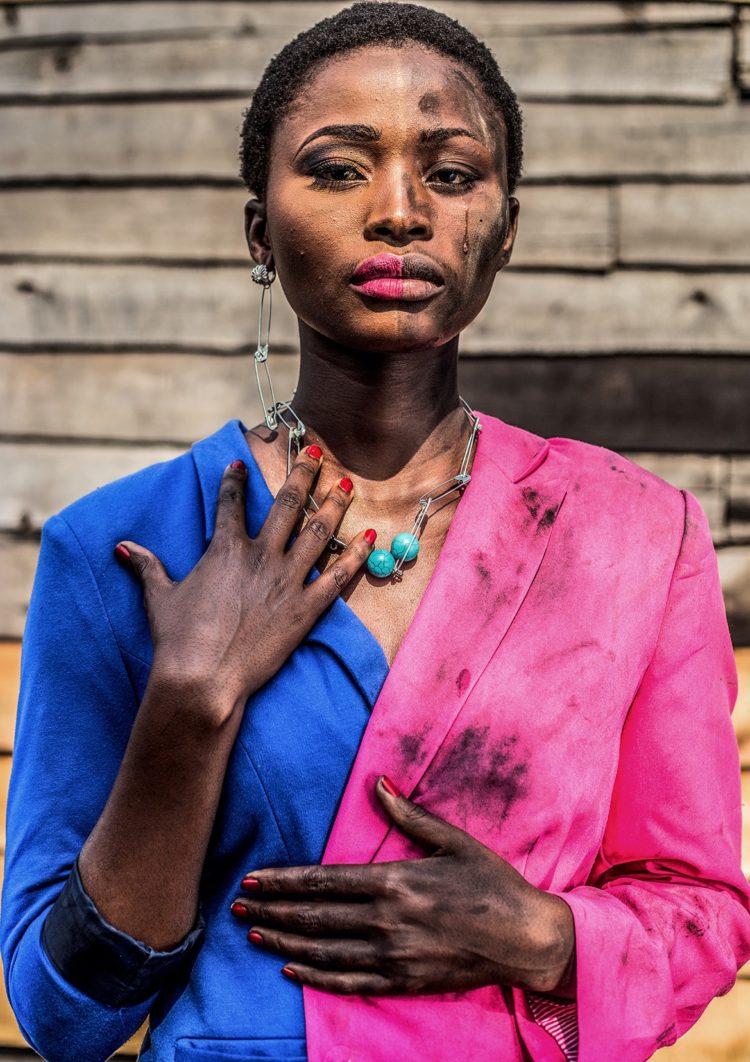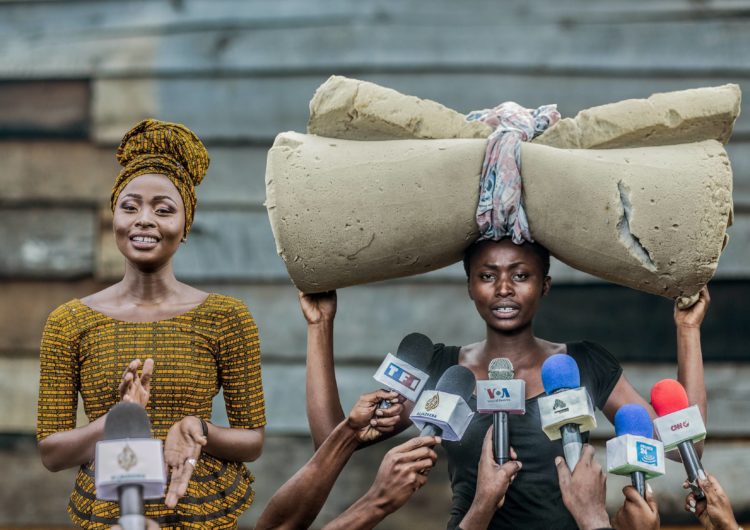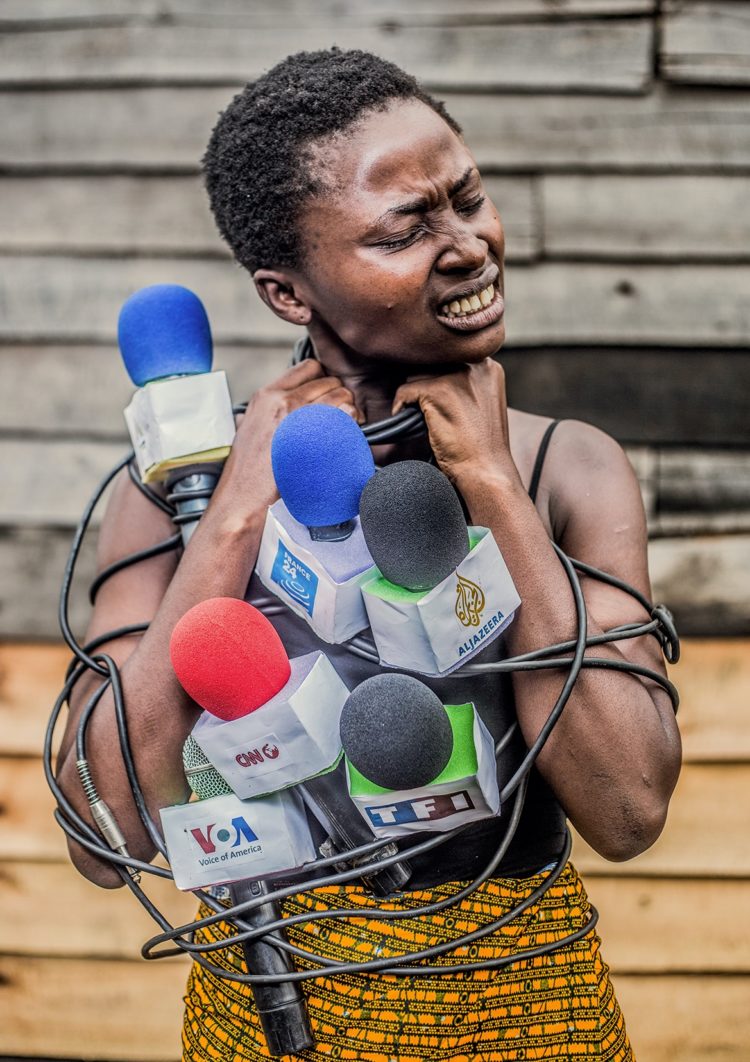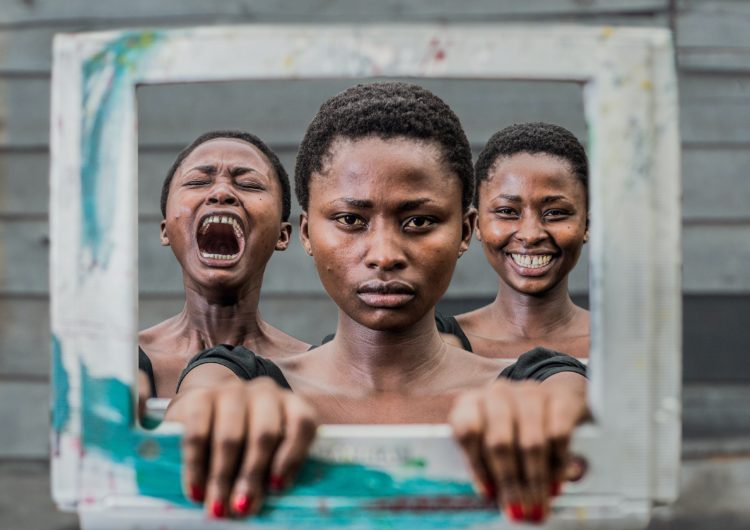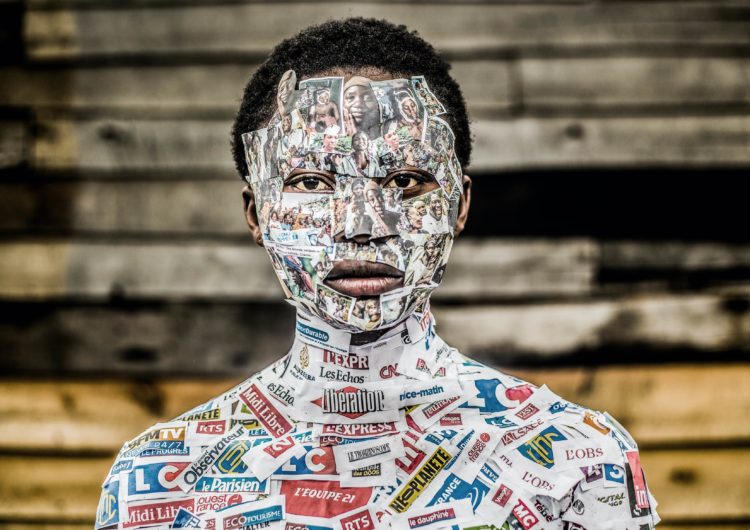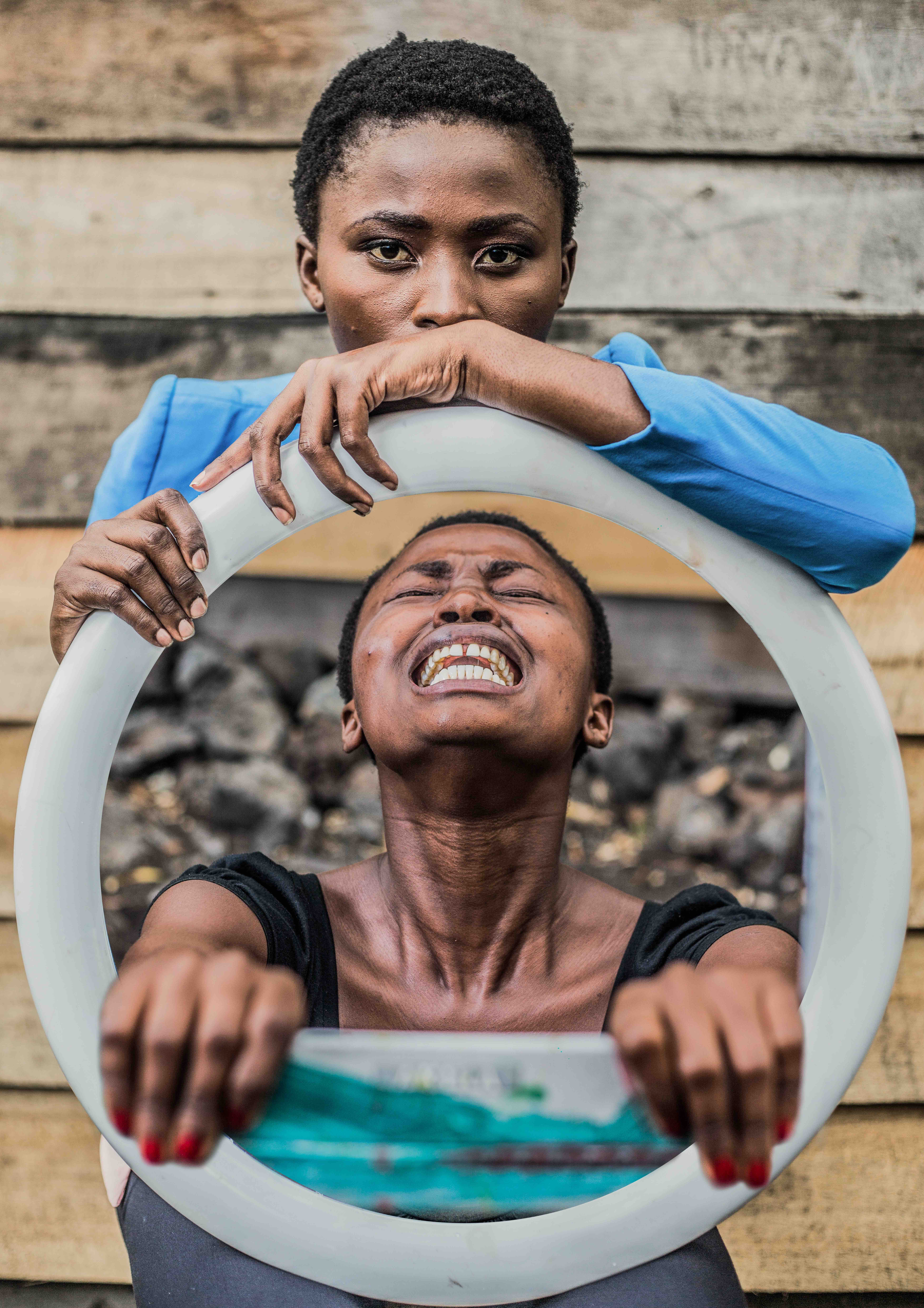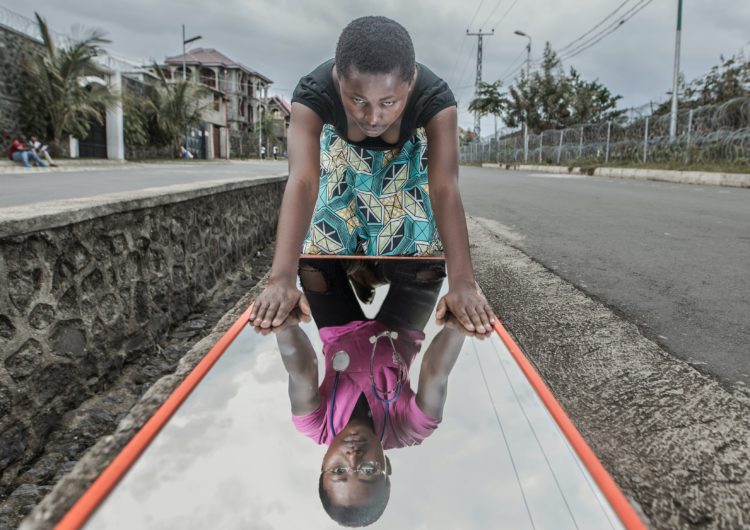In December 2019, Pamela Tulizo was one of the breakout stars of the last edition of the Lubumbashi Biennial, which was founded in 2008 in her native Democratic Republic of Congo. Last month, she was chosen as the overall winner at the third edition of Dior Photography & Visual Arts Award for Young Talents.
Based in Goma, the capital of the North Kivu province in the D.R.C., where she has held two successful exhibitions, Tulizo is getting people to notice her photos, which seek to reflect the resilience, determination and beauty of the women living in her community. Goma is known mainly for conflict, war and disease, and few reporters seem interested in telling the positive stories of everyday citizens and their aspirations.
Instead of asking Tulizo about the numerous outbreaks of violence in her city, we interviewed her recently with a candid desire to understand why and how she created her award-winning “Double Identity” series, which brings vivid color and complex emotions to illustrate some of the daily rituals in this part of Central Africa.
How and when did you start your first experiments with photography?
I started my career as a journalist in Goma, after training in international journalism and radio writing with Radio France International. After a few years, I decided to specialize in photography because I saw it as a way to be more open to the stories I wanted to write. I thought photography would allow me to be free.
Unfortunately, when I made this decision there was no art school or photography school or academy of fine arts I could go to. That’s how I started asking questions. One of the photographers that I knew in Goma (his name is Martin Lukongo) taught me some of the basic photography techniques, and a few months later I participated in photography related training sessions with Yole Africa in Goma, in Senegal with Africalia, in Lubumbashi with the Picha Art
Center which is where I found out about a photography scholarship opportunity during my first exhibition in the Lubumbashi Biennale.
After a few months, I applied for and obtained a photojournalism scholarship and that led me to a documentary in South Africa at the Market Photo Workshop, which is a school of photography, a gallery, and a project space. That’s also where I heard about the Dior competition.
Having already worked as a journalist, how do you balance a career in photojournalism with your fine art photography?
At the moment, I am working mainly as an art photographer focusing on documentary, but I am also working part time as a photojournalist.
Much of your work is about social change. In the past, photographers such as Mohamed Amin and James Natchwey were able to use photography to document major social issues. What impact do you hope your photos can have on society?
I hope to inspire a woman, and that woman too can inspire another woman, and so forth and so on. That, to me, is already a step towards awareness of some of the issues we are dealing with. That overall awareness will help many women, and humanity too.
I also hope that with this type of work, the world will choose to see what the press presents from my country differently. But also, in general, I hope that my work will build on the education of women and the eradication of social injustice in my country, in Africa, and in the world in general.
Your “Double Identity” series is powerful, and critically acclaimed, because the images are both real and constructed. How did you create this work?
This series was created in Goma during my artistic residency there as part of the Lubumbashi Biennial. I was there with Picha, the non-profit collective that runs the Biennial. The series is based on real stories, where each photo carries a story and a message. My artistic approach veers towards staging, and therefore in this series I use staging techniques to illustrate real scenes.
I had to use several forms of art such as makeup, collage, styling, mannequins, cinema. That’s what allowed me to bring together several visual elements. Most importantly, I worked with a team that helped me to make it happen.
The media have been reporting on North Kivu for a long time, and most of the words and pictures speak of desperation. Can you tell us about a particular moment of joy and optimism that you personally experienced in the region?
For me, each day in Goma is unique. I love my city and I love my community. I cannot mention any one thing, but I am inviting everyone, whether it’s the international media, artists, writers, or others to see life beyond the despair that is always shown, because in Goma and in Congo there are things happening that are not about misery. You just have to decide to pay attention to those things.

